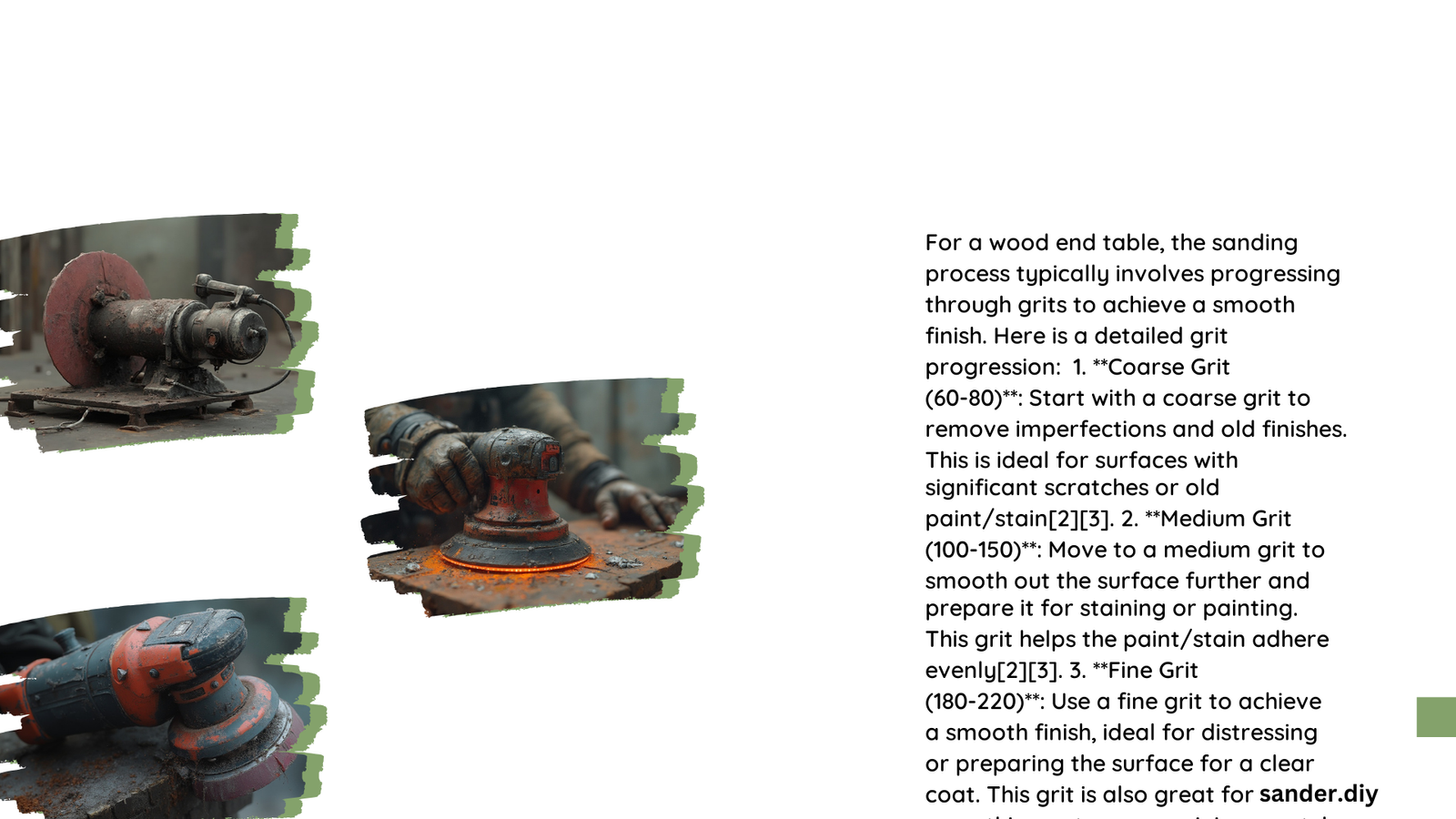Sanding a wood end table requires a strategic approach to achieve a flawless finish. The right sandpaper grit can transform a rough, imperfect surface into a smooth, professional-looking piece of furniture. This comprehensive guide will walk you through the precise grit selection process, ensuring your end table looks stunning from start to finish.
What Sandpaper Grit Should You Start With?
When tackling a wood end table, your sanding journey begins with understanding the initial condition of the wood surface. Here’s a strategic approach to selecting the right grit:
Initial Surface Assessment
| Wood Condition | Recommended Starting Grit | Purpose |
|---|---|---|
| Rough, Old Finish | 40-60 grit | Remove heavy imperfections |
| Moderate Wear | 80-100 grit | Smooth initial surface |
| Relatively Smooth | 120-150 grit | Light preparation |
Grit Progression Strategy
- Coarse Grit (40-80)
- Ideal for removing:
- Old paint
- Deep scratches
- Significant surface irregularities
-
Use with caution to prevent over-sanding
-
Medium Grit (100-150)
- Smooths out initial sanding marks
- Prepares surface for finer sanding
-
Creates uniform texture
-
Fine Grit (180-220)
- Prepares wood for finishing
- Removes medium-level imperfections
- Creates smooth surface for stain or paint
How to Choose the Right Sander?

Different sanders work best with specific grit ranges:
- Random Orbital Sander
- Most versatile
- Works well with 80-220 grit
-
Minimizes visible scratching
-
Belt Sander
- Best for initial rough sanding
- Recommended for 40-80 grit
-
Use carefully to avoid removing too much material
-
Finishing Sander
- Ideal for 180-400 grit
- Perfect for final smoothing
What Factors Influence Grit Selection?
Several critical factors determine your grit choice:
Wood Type Considerations
- Soft Woods (Pine, Cedar)
- Use lighter touch
- Progress through grits more quickly
-
Stop at 180 grit
-
Hard Woods (Oak, Maple)
- Can handle more aggressive sanding
- Can progress to 220 grit
- Requires more pressure
Finish Type Impact
- Oil-Based Finishes
- Sand to 180 grit
-
Provides better absorption
-
Water-Based Finishes
- Sand to 220 grit
- Ensures smoother final surface
Pro Tips for Perfect Sanding
- Always sand with the wood grain
- Use dust collection or wear a mask
- Replace sandpaper frequently
- Test grit progression on scrap wood
Common Mistakes to Avoid
- Skipping grit levels
- Using worn-out sandpaper
- Applying too much pressure
- Inconsistent sanding technique
Final Recommendations
For most wood end tables, follow this grit progression:
1. 80 grit (initial smoothing)
2. 120 grit (intermediate preparation)
3. 180 grit (pre-finish smoothing)
4. 220 grit (final preparation)
Pro Tip: Always do a final hand-sanding with 220 grit for the smoothest possible surface.
Maintenance and Care
Regular maintenance keeps your end table looking pristine:
– Dust regularly
– Use coasters
– Avoid direct sunlight
– Reapply finish every few years
Conclusion
Mastering the art of sanding requires patience, the right tools, and understanding grit progression. By following these guidelines, you’ll transform your wood end table into a professional-looking piece that showcases your craftsmanship.
